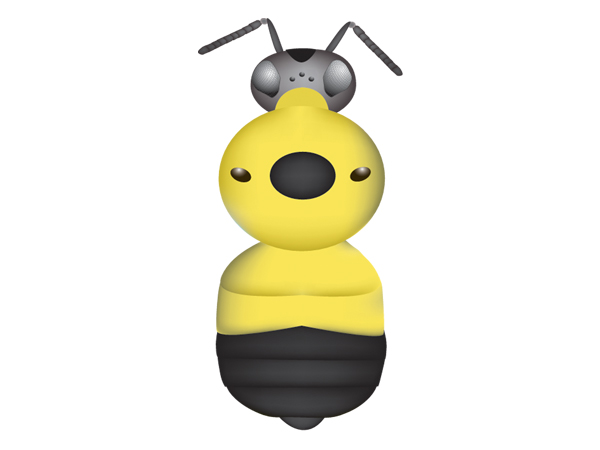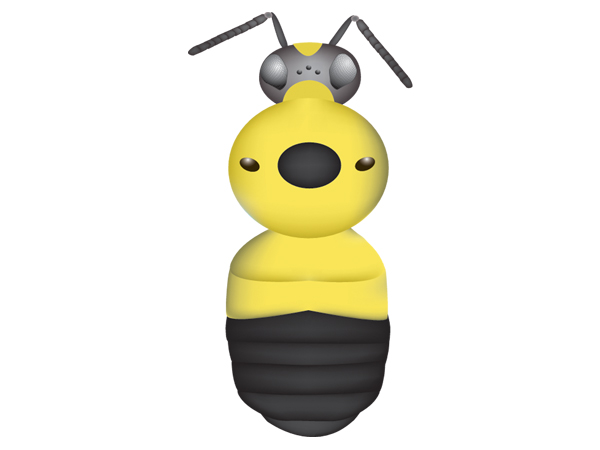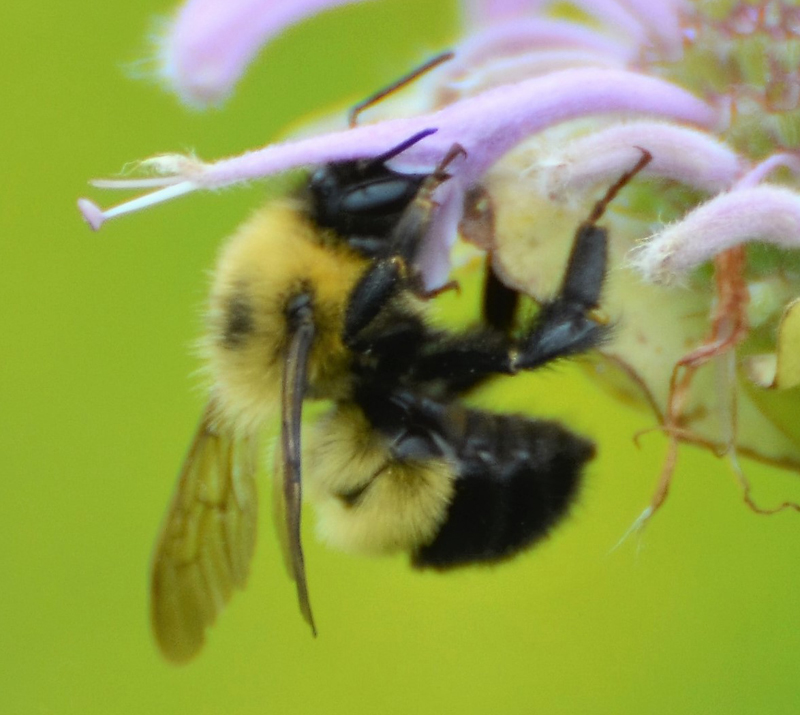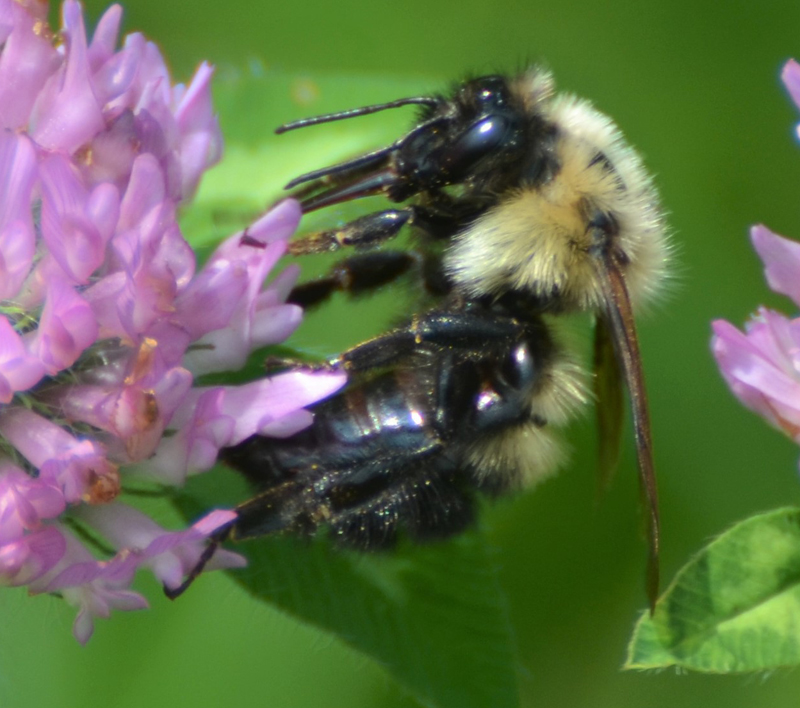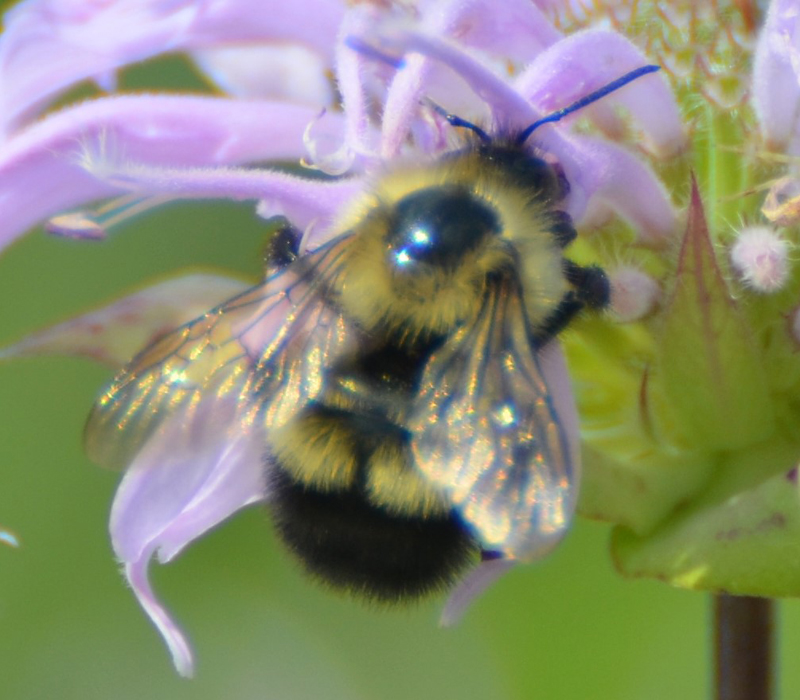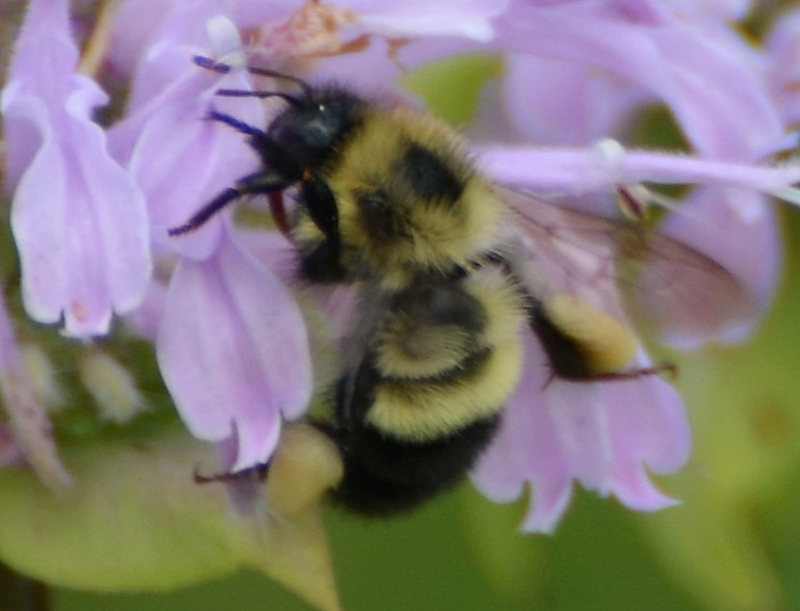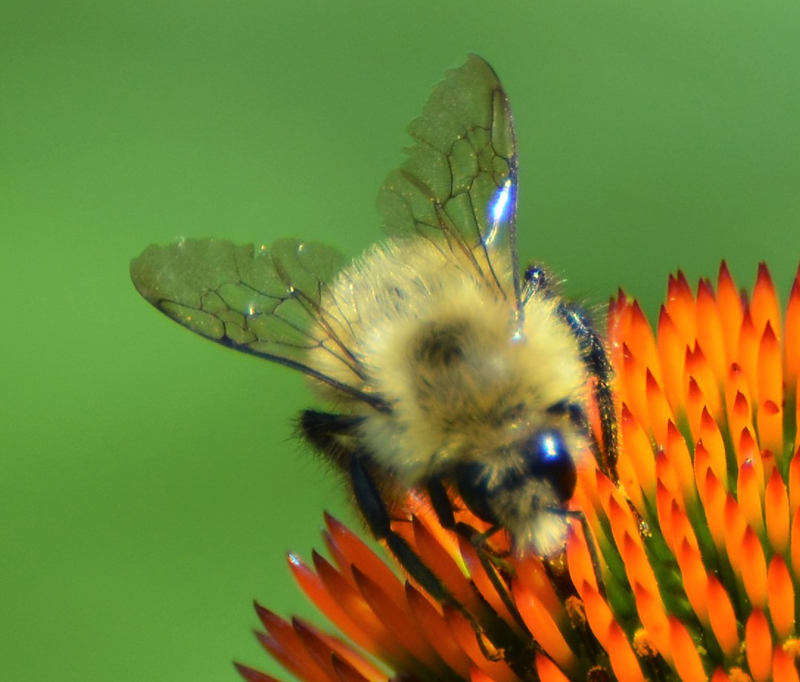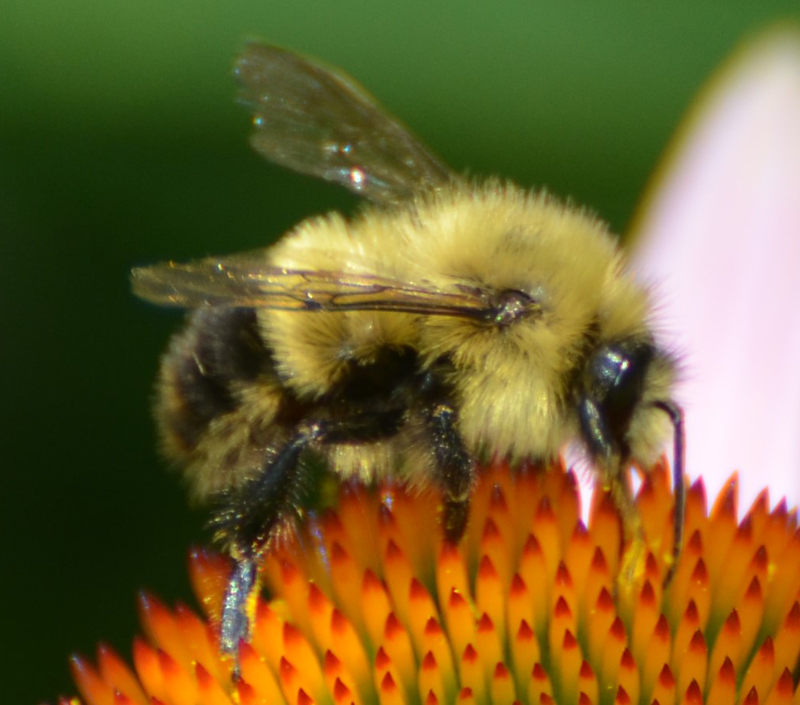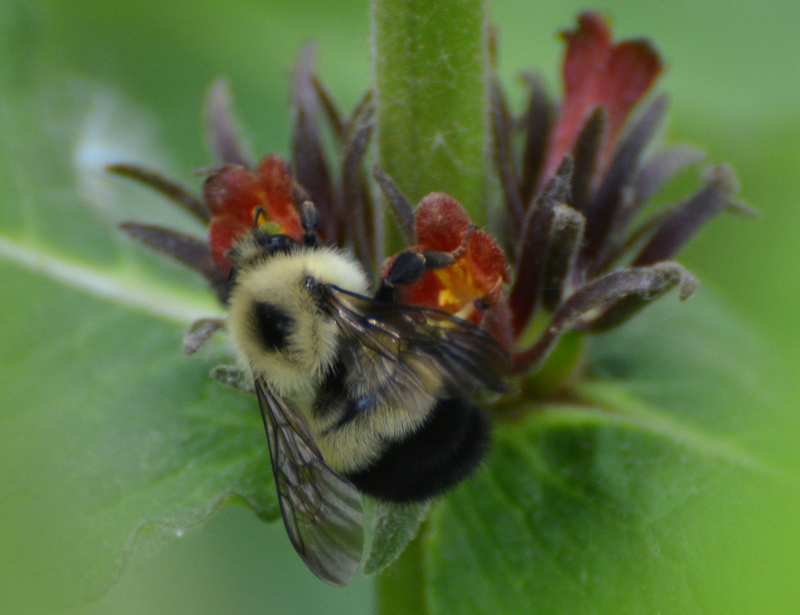
Status-Global/State:
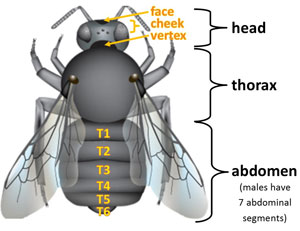
Identification:
- Worker – Face black, or intermixed and vertex yellow. Thorax mostly yellow with a black spot between wingpads. Abdominal segments T1-2 yellow and T3-6 black.
- Queen/gyne – Similar to workers. Some morphs are only yellow on the top half of segment T2. Queens/gynes are larger than workers and appear earlier in the season.
- Male – Face and vertex yellow with some black intermixed. Thorax mostly yellow typically with a black spot between wingpads. Abdominal segments T1-2 yellow and T3-6 black. Some morphs do not have a spot on the thorax and have yellow and intermixed hair on T3-6. Several morphs have yellow running along the sides of the abdomen.
- Other distinguishing features – Small bee with a long face/cheek and long shaggy hair. Difficult to distinguish females from Sanderson's bumble bee (B. sandersoni) and confusing bumble bee (B. perplexus); and males from Sanderson's bumble bee (B. sandersoni) and redbelted bumble bee (B. rufocinctus).
Similar Wisconsin Species:
Similar bumble bee species in Wisconsin are twospotted bumble bee (B. bimaculatus), common eastern bumble bee (B. impatiens), Sanderson's bumble bee (B. sandersoni), frigid bumble bee (B. frigidus), confusing bumble bee (B. perplexus), and rusty patched bumble bee (B. affinis) (Colla et al. 2011, Williams et al. 2014).
Description of Habitat/Range:
Known habitats include wooded areas, wetlands, urban parks, and gardens (Williams et al. 2014). Nests have been found underground and on the ground surface (Colla et al. 2011, Williams et al. 2014).
Nectar Plants
The half-black bumble bee is a medium-tongued species (Williams et al. 2014). Nectar plants include Asclepias (milkweeds), Asters, Chelone, Cirsium (thistles), Eupatorium (Joe-pye weed), Impatiens, Lonicera (honeysuckles), Monarda (bee balms), Penstemon (beard-tongues), Prunella, Solidago (goldenrods), Spirea (meadowsweet), Trifolium (clovers), Vicia (vetches) and Viola (Williams et al. 2014, Colla et al. 2011).
Data from verified B3 observations [updated 2/28/2024].
Flight Season:
In Wisconsin, observation records are mostly between May and September. Rangewide, queens start emerging in April and enter diapause by October (Colla et al. 2011).
Literature Cited:
Colla, S., Richardson, L. and Williams, P. (2011) Bumble Bees of the Eastern United States. A product of the USDA Forest Service and the Pollinator Partnership with funding from the National Fish and Wildlife Foundation.
Hatfield, R., Jepsen, S., Thorp, R., Richardson, L. & Colla, S. 2015. Bombus vagans. The IUCN Red List of Threatened Species 2015: e.T44938024A46440316.
Williams, P.H., Thorp, R.W., Richardson, L.L. and Colla, S.R. (2014) The Bumble bees of North America: An Identification guide. Princeton University Press, Princeton.
